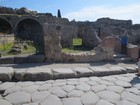
IMG_0976 - Most houses had dry toilets and sold the waste to farmers for fertilizer, or used it in household gardens.

IMG_0979 - 30% of houses had a small, square oven for baking and cooking. For others there were 18 major bakers.

IMG_0980 - The recessed streets ran downhill to drain water away from houses. Stepping stones let people cross.
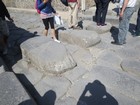
IMG_0981 - Spaces let wagon wheels pass through. Drivers had to slow down to guide horses through.
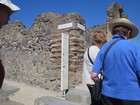
IMG_0982 - The site is so huge it would be easy to get lost.
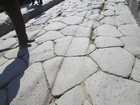
IMG_0983 - Deep grooves were worn into the road at the entrance to the city by heavily loaded wagons.
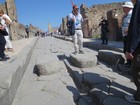
IMG_0984
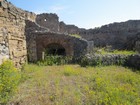
IMG_0985 - See the holes for supports for a second floor, the style in AD 79. Later in Ostia Antica they went to 5 floors.
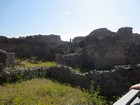
IMG_0986 - Preservation work is an on-going challenge.
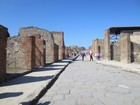
IMG_0988 - Most people had no running water at home so they bathed at the public baths.
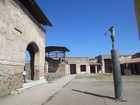
IMG_0990 - The men's gymnasium and baths.
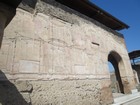
IMG_0991 - There was some marble decor, but most was white stucco, as here, sometimes with black marble chips in it.